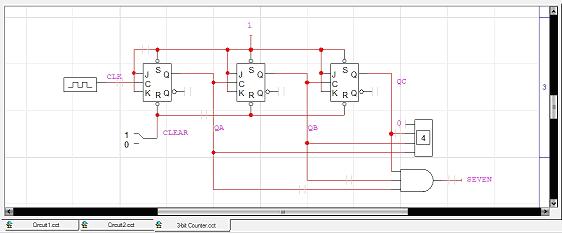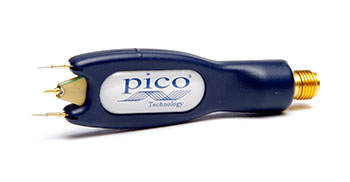

- Signal probe on logicworks 5 manual#
- Signal probe on logicworks 5 full#
- Signal probe on logicworks 5 software#
- Signal probe on logicworks 5 simulator#
- Signal probe on logicworks 5 windows#
No other software tool makes digital design easier, faster or more interactive than LogicWorks.
Select the Binary Probe type from the Parts Palette.LogicWorks is an interactive circuit design tool intended for teaching and learning digital logic. The size of the step will depend upon the circuit. Note: The Step button advances the simulation to the next time at which there is some circuit activity, not necessarily just one time unit. Signal probe on logicworks 5 simulator#
Click on the Run button in the Simulator toolbar. Click repeatedly on the Step ( ) button, and observe that the simulation proceeds one step at a time. Adjust the speed slider control in the Simulator toolbar, and notice the simulation slows. Click on the ( )Reset button, and notice that the simulation restarts at time 0. Select the Timing Window command again or use the corresponding button to re-enable the display. You will notice that the Timing window disappears and the current time indicator in the Simulation palette advances much more quickly. Select the Timing Window item in the View menu. The display resolution can be adjusted over a wide range of time values to suit the displayed data. Place one of the Exclusive-NOR gates adjacent to the 164 device so that the pins just touch., and click once to anchor the device. If LogicWorks is being used only for schematic entry, it is also possible to make symbols with no simulation function. 
Other devices such as those in the 7400 library, are called sub-circuit types, because their simulation models are made up of primitives.

The XNOR-2 and the devices in the Simulation Gates, Simulation Logic, and Simulation I/O libraries are called primitive types because they have built-in simulation models in LogicWorks. Once you move outside of the Parts Palette, the cursor will immediately change to match the new symbol. (You might need to change the text in the “Filter box, if you used it in a previous step).
Move again to the Parts Palette, and this time double-click on the XNOR-2 type. Notice that you can click and drag the device that you placed to any desired new position. Press the space-bar to return to Point mode. More devices of the same type could be created at this point, but in this example we wish to select another symbol: A permanent image of the device will now stay behind in that location, and the cursor image will continue to follow the movement of the mouse: Position this image somewhere near the centre of the circuit windows, and click the left mouse button. The labelling and simulation characteristics can be adjusted to match the various 7400 families on the market. The numbered devices in this library are generic 7400-series types. The cursor on the screen will now be replaced by a moving image of the selected symbol, in this case an 8-bit shift register. Move the cursor back into the circuit window. Locate the part 74_164 in the parts list, and double-click on it. This step will reduce the parts list to only items containing that text. Locate the Filter text box on the Parts Palette. Signal probe on logicworks 5 manual#
The procedure is described in more detail in the LogicWorks Reference manual provided in electronic form with the software.
Right-click on the Parts Palette, and use the same set of library commands that appears in that menuĪny collection of libraries can be opened automatically at start-up by modifying the INI file. Click on the File Menu and select the Libraries submenu then choose the New Lib or Open Lib commands as needed. The list of open libraries can be changed manually by doing either of the following: Libraries can be opened and closed manually by using the Parts Palette pop-up menu’s Open and Close commands, or any collections of libraries can be opened automatically at start-up by placing them in the Libs directory. The Parts Palette shows a merged list of all parts in all open libraries. Signal probe on logicworks 5 windows#
Either of these windows can be moved or resized by the usual methods to suit your needs. The smaller panel at the bottom of the screen will be used by the program to display a timing diagram of the signals in your circuit, as well as other outputs generated by your circuit. The circuit window is your view port onto the circuit diagram, which you will manipulate using the various drawing tools. Once the program has started, you will be looking at a screen like this: Start the :LogicWorks program by double-clicking on its icon. Other text provides background and explanation of the actions being taken. Provides step-by-step instructions for achieving a specific goal. In the following tutorial sections text with a square, For complete details on any subject, see the reference manual that comes with LogicWorks. These tutorials are intended only to introduce you to LogicWorks features.

Signal probe on logicworks 5 full#
This tutorial will give you a taste of how quickly you can put together a circuit with full simulation.








 0 kommentar(er)
0 kommentar(er)
